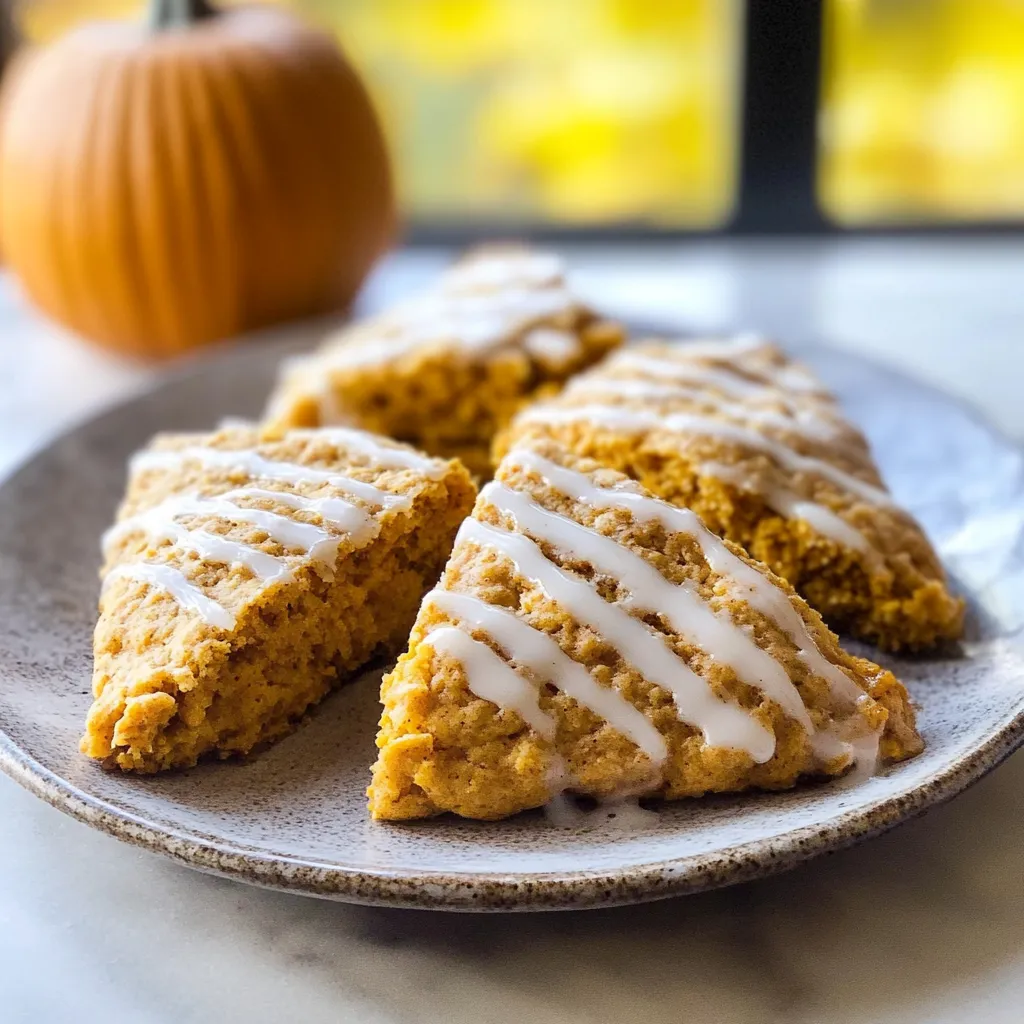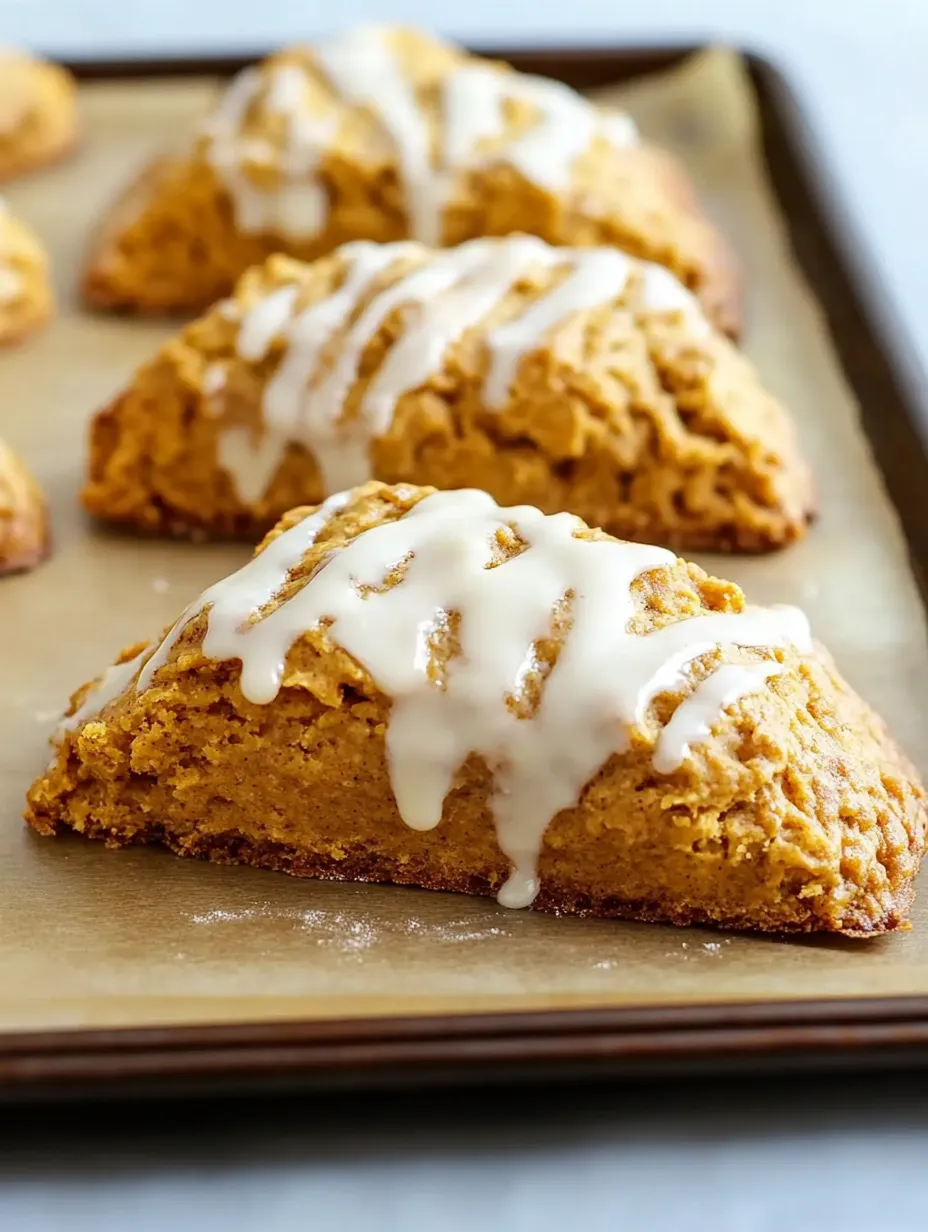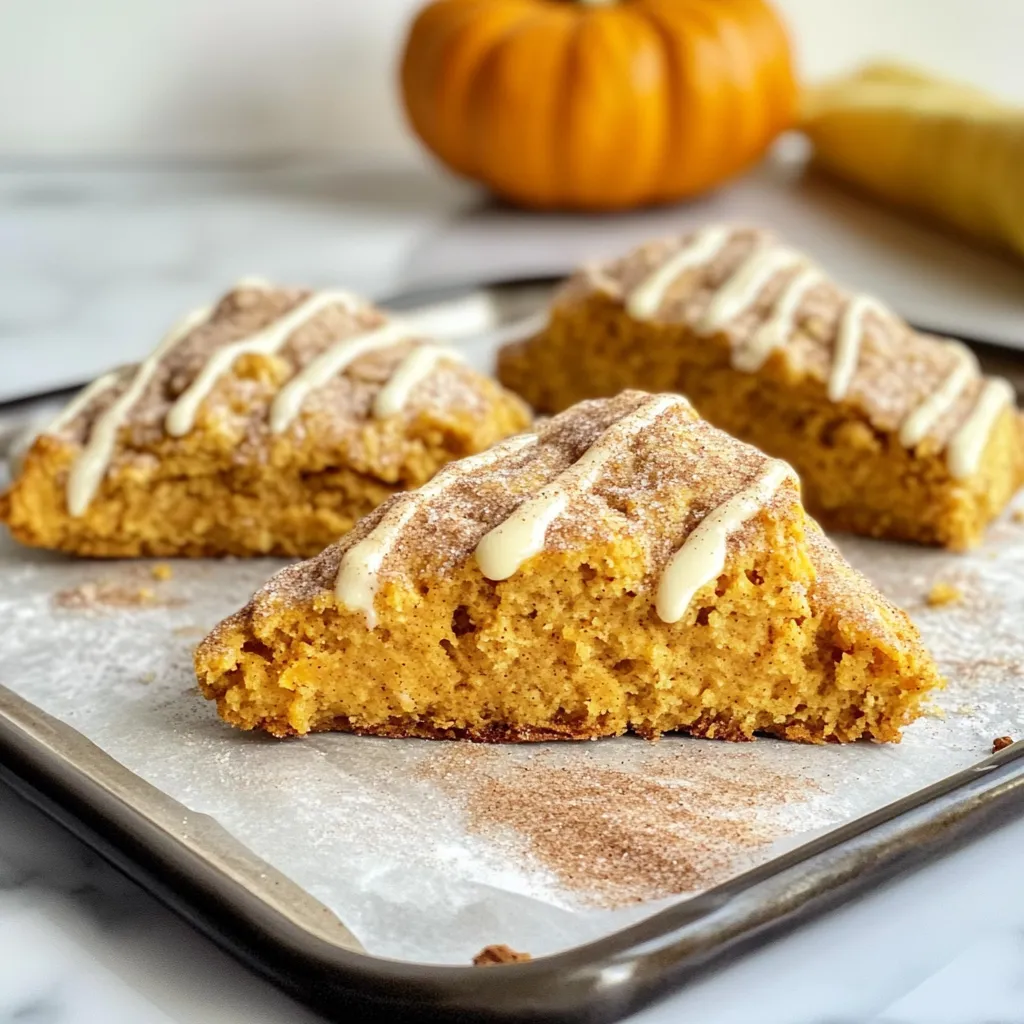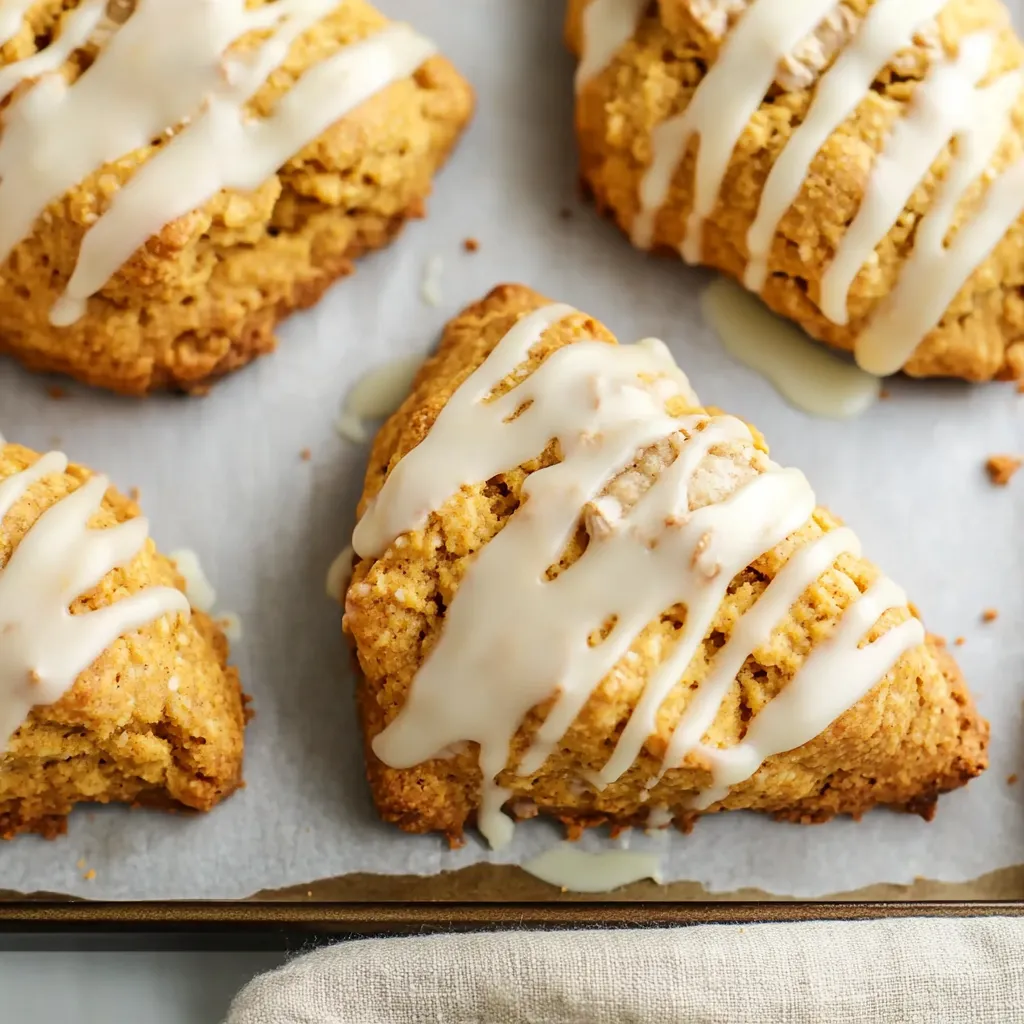 Pin it
Pin it
When fresh pumpkin scents fill your kitchen from the oven, it turns an ordinary morning into something magical. After years trying to get scones just right, I've found that making truly great pumpkin scones comes down to getting the temperature and handling just right. These aren't regular scones - they're soft, flaky bites of fall comfort, topped with maple glaze that turns them from tasty to unforgettable.
I made these for a fall get-together last weekend, and everyone went quiet when they took their first bite. What's the trick? It's all about temperature control and handling the dough gently for that perfect texture.
Key Ingredients and Smart Picks:
Go for high-quality butter - try European-style if you can find it, since it's got more fat. Pick plain pumpkin purée, not the pre-sweetened pie mix, and let it warm up to room temp before mixing. Fresh spices really matter here; toss your pumpkin pie spice if it's been sitting around longer than six months. Even your eggs play a part - keep them cold in the fridge until you need them.
 Pin it
Pin it
Making Them From Scratch
Start by cutting your butter into small half-inch blocks and pop them in the freezer while getting everything else ready. This freezing step isn't optional - those cold butter chunks create steam while baking, giving you those lovely flaky layers. At the same time, move your oven rack to the upper-middle spot and warm it to 425°F.
In the biggest bowl you've got, mix the flour, brown sugar, baking powder, spices, and salt together. You're not just stirring here - you're adding air to the flour and making sure the rising agents are spread out evenly. Run your fingers through it to break up any brown sugar clumps you find.
 Pin it
Pin it
Nailing The Mixing Part
Now comes the important bit - adding your icy butter to the dry stuff. Whether you use a pastry tool or your fingers, work fast and with purpose. You want a mix that looks like rough sand with some bigger, pea-sized butter bits still visible. These different sizes create varied textures in your finished scones. If you're using your hands, don't dawdle - your warm fingers are working against those cold butter pieces.
In another bowl, stir your pumpkin purée and cold eggs until they're totally smooth. The temperature difference here is on purpose - cool eggs help stop your butter from warming up. Pour this into your flour-butter mix, using a rubber spatula to fold everything together with light, careful strokes. Stop once the dough barely comes together - those few dry spots will mix in when you shape it.
Dump your rough dough onto a lightly floured counter. With floured hands, softly press it together and form an 8-inch circle, about 1½ inches thick. Don't grab a rolling pin - your hands give better feel and won't overwork the dough. Cut into eight wedges with firm, straight-down cuts using a sharp knife. Clean cuts help them rise better.
Move your wedges to a parchment-lined baking sheet, leaving at least an inch between them. This is where you've got to wait - freeze these shaped scones for a full 20 minutes. This rest lets the gluten chill out and the butter get completely cold again. By now, your oven should be fully heated.
 Pin it
Pin it
The Last Steps
Just before they go in the oven, brush each scone with milk and sprinkle lots of turbinado sugar on top. The milk helps them brown evenly while the sugar adds sweetness and a nice crunch. Put them in your hot oven and keep an eye on them - they'll need about 17-22 minutes, but start checking at 15. Look for golden brown edges and tops that bounce back slightly when you touch them.
Creating The Maple Topping
While your scones cool down, mix up the maple glaze. Real maple syrup is a must here - its rich sweetness turns these scones from good to amazing. Mix it with powdered sugar until it's smooth and silky. It should be thick enough to keep its shape when drizzled but runny enough to slowly flow down the sides of your scones. Add some vanilla and a tiny bit of salt to bring out the maple flavor.
Frequently Asked Questions
- → Why keep ingredients cold?
- Cold ingredients stop the butter from melting too soon, giving your scones flaky layers as they bake.
- → Can I freeze scones before baking?
- Absolutely. Freeze shaped scones until firm, then place them in freezer-safe bags for up to 2 months. Bake straight from the freezer when ready.
- → How can I replace pumpkin spice?
- You can mix cinnamon, nutmeg, ginger, and a dash of cloves as a homemade pumpkin spice alternative.
- → Why chill the dough before baking?
- Chilled dough bakes better, holding its shape and creating flakier layers for a more tender scone.
- → Can I make them in advance?
- Yes! You can freeze unbaked scones or store baked ones in a sealed container for up to two days.
